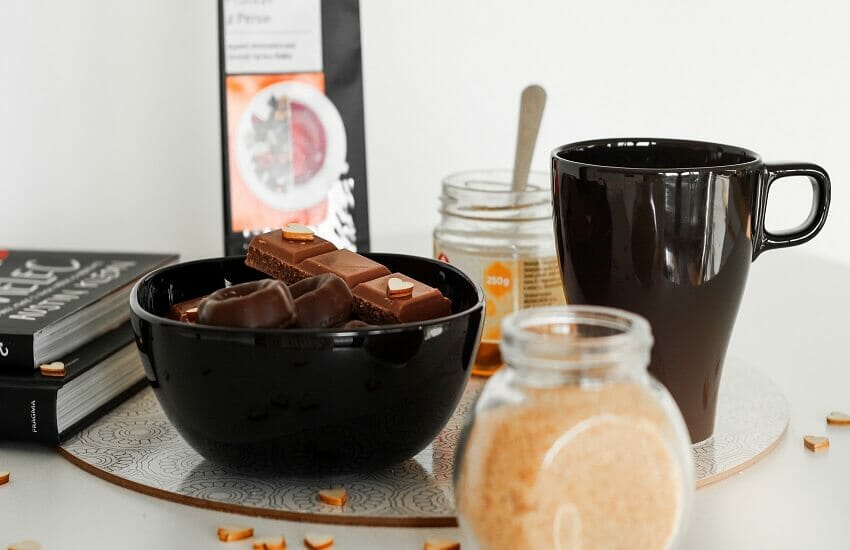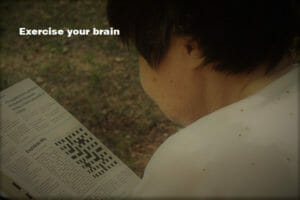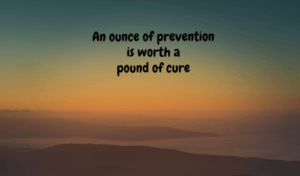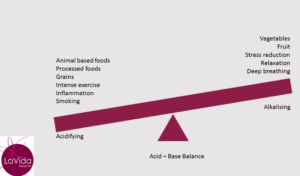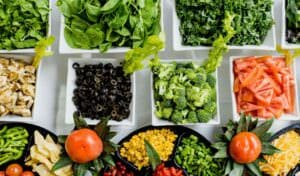Do you worry about how much sugar you consume?
Have you thought about it? You’ve probably worked out that the typical western diet is quite high in sugar. But is sugar really an evil substance you should be avoiding? Unsurprisingly, the answer is not a simple yes or no. Not all sugars are the same.
What is sugar?
Sugar is a simple carbohydrate that is naturally found in all plants (including cane sugar which is refined into the sugar added to your foods). Carbohydrates are one of the categories of macronutrient that provide your body with energy (the other macronutrients are fats and protein).
We consume sugar in two main ways. Firstly, naturally occurring sugar in our fruits and vegetables (for the most part, not too concerning). Secondly, consuming food and beverages with added or free sugar (and this is where we can come unstuck).
How much sugar should you eat?
In 2019, Food Standards Australia published guidelines (in line with World Health Organisation recommendations) advising that free or added sugar should be limited to less than 10% of your daily kilojoule intake. For an average healthy adult at a healthy weight, consuming approximately 8000 kilojoules/day, this equates to roughly about 11 teaspoons of added or free sugar per day. (One teaspoon of sugar is equivalent to approximately 4 grams of sugar which is roughly 70Kj.
Added or free sugar may be found in fruit juices, fruit juice concentrates, soft drinks, mixers, energy drinks, honey, cakes, biscuits, lollies, spreads, jams, syrups etc. Any sugar that is added during cooking or food preparation or added to processed foods during manufacturing is considered added sugar.
It is not hard to exceed the daily recommendations
Just look at the following regularly consumed food and drink*:
- One 375ml bottle of soft drink (approx 10 teaspoons)
- One 200ml glass of orange juice (approx 5 teaspoons of sugar)
- Three cups of tea or coffee per day each with two teaspoons of sugar (i.e. 6 teaspoons sugar per day)
- 50g of milk chocolate (approx 4 teaspoons)
- One kitkat (approx 5 teaspoons)
- Two slices of raisin toast (approx 3 teaspoons)
- Two Tim Tams (approx 4 teaspoons)
- One tablespoon of jam (approx 3 teaspoons)
- Tonic water and other alcohol mixers may contain approx 3 teaspoons per standard drink
- 100gms of sugar added to a recipe is the equivalent of 25 teaspoons
- A regular blueberry muffin (around 4 teaspoons).
*All of these figures will vary depending on the brand, but you get the general idea.
It is important to note that while the World Health Organisation recommends a reduction in your added sugar intake, there really is no need to include any added sugar to your diet. Stick to fruit and vegetables and you will feel better for it.
Why do you need to limit your intake of added sugar?
Eating too much added sugar has some obvious repercussions such as weight gain and tooth decay but it can also lead to a variety of chronic illnesses such as diabetes, cardiovascular disease and there is some evidence that it may contribute to cancer risk. Before you notice any significant symptoms however, added sugar may be disrupting your health by causing inflammation, altering your gut microbiome and disrupting your hormone production and regulation.
What about natural sugars found in fruit and vegetables?
If you are generally healthy and following the Australian Dietary Guidelines, eating 2 serves of fruit and 5+ serves of vegetables per day then it is probably not necessary for you to start tracking all the natural sugar you are eating. Plant food has a multitude of health benefits including fibre, vitamins and minerals and phytonutrients, all vital for good health. These all impact how the sugar is digested and it is why natural sugar does not have the same detrimental effect on your body as added sugar.
If you are following the above dietary guidelines yet still have issues with your weight, hormonal problems, digestion or any other significant ongoing health condition, it is worth examining your diet in detail.
Beware of hidden sugar
You probably know that ice cream, lollies, cakes, biscuits and soft drinks all contain lots of added sugar, but look out for sugar added to other foods during processing. Luckily, our food labels tell you a lot about the ingredients and the sugar added to processed foods so be sure to check the nutrition labels and ingredients lists of anything you buy to check for added sugar.
A simple way to look for hidden sugars is to read the ingredients list. Any ingredient that ends in ‘ose’ such as glucose, sucrose, fructose and maltose are all forms of sugar. Also, any ingredient that ends in ‘ol’ like mannitol or sorbitol is also sugar.
Added sugar can also have a variety of names such as rice syrup, agave nectar, maple syrup, honey, molasses, corn syrup, and the list goes on. So be sure to read the label and where possible choose foods without added sugars or at least not listed in the first 4 or 5 ingredients.
Some foods and drinks you might be surprised to know have added sugar (of course depending on the brand):
- Muesli and muesli bars
- Bread including rye and wholemeal varieties
- Crackers including brown rice crackers
- Most breakfast cereals
- Dips
- Yoghurt
- Canned fruit and vegetables
- Peanut butter
- Frozen meals, even the ones for weight loss
- Condiments such as tomato sauce, soy sauce, salad dressings and mayonnaise
Tips for reducing your added sugar intake
It can be challenging to reduce your sugar intake as it’s highly addictive (there’s a reason why food manufacturers add it). But there are some ways to limit your intake and feel better for it.
Crowd out the sugar with healthy foods
By increasing your vegetable, fruit, nuts, seeds and wholegrain intake you might find you just don’t have the room for any added sugar.
Start with one meal at a time
Focus on a meal you will find easiest to change such as breakfast. You could swap your breakfast cereal for porridge or make your own muesli mix.
Watch what you’re drinking
Swap your usual soft drink for water or herbal tea.
Reduce the amount of sugar you have in your tea or coffee. Start by reducing it by a quarter and then keep going until your taste buds adapt (and they will adapt).
Give the cocktails and premixed alcohol drinks a miss (and watch those alcohol mixers such as tonic water).
Give yourself a ‘treat’ day each week
Get rid of all the sugary foods in your house but plan a day a week when you can enjoy a treat and go out to get it when you’re ready to have it. This can help to moderate your intake and avoids the ‘all or nothing’ approach which may be difficult to maintain.
Keep a food diary
By writing down what you’re eating you can easily find patterns in your eating behaviour. You can identify when you’re seeking out sweet treats and then work on ways to avoid repeating unhealthy patterns. You may not even be aware of how much sugar you’re eating until you start to record it.
Get some help
Sometimes it’s just too hard to do it all on your own. I can help you work on your diet and habits, not just your sugar intake, to help you succeed. Plus I have some handy herbs and nutritional supplements to help combat your sugar cravings whilst you’re changing habits.
And my number one tip…..read the nutrition panel on anything packaged. If sugar is listed in the first few ingredients or there is more than 10g of sugar per 100ml/gm serve then put it back on the shelf and walk away.
